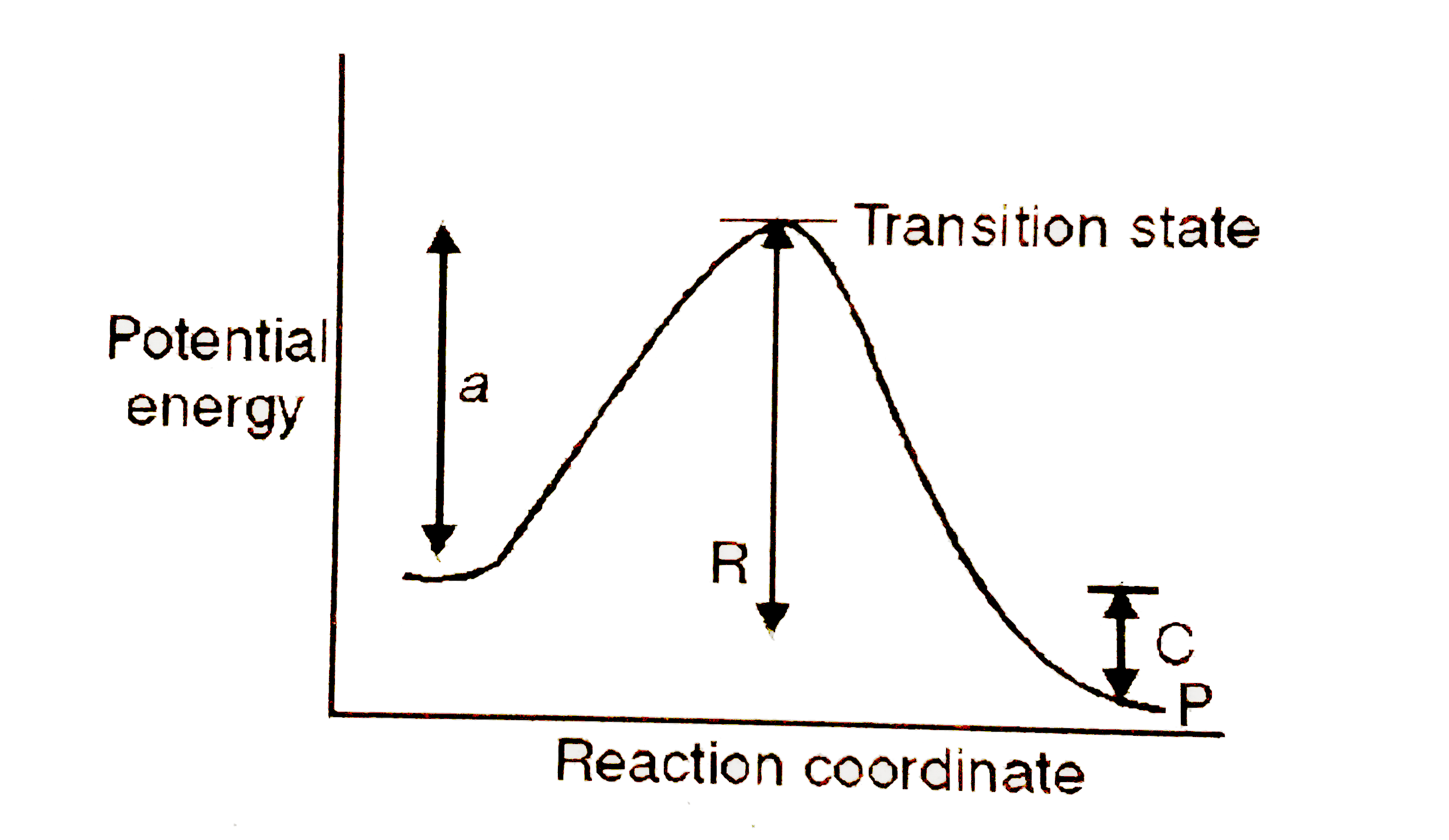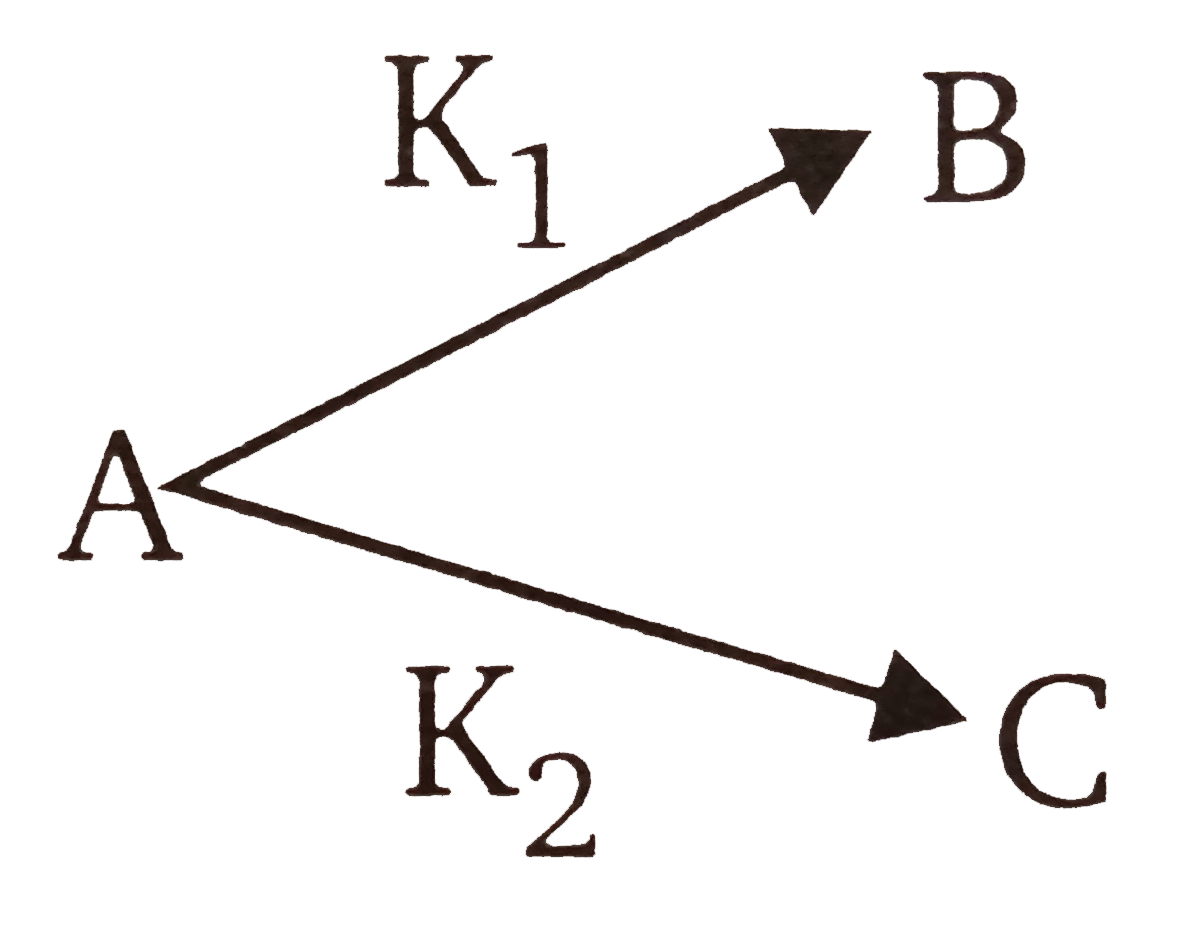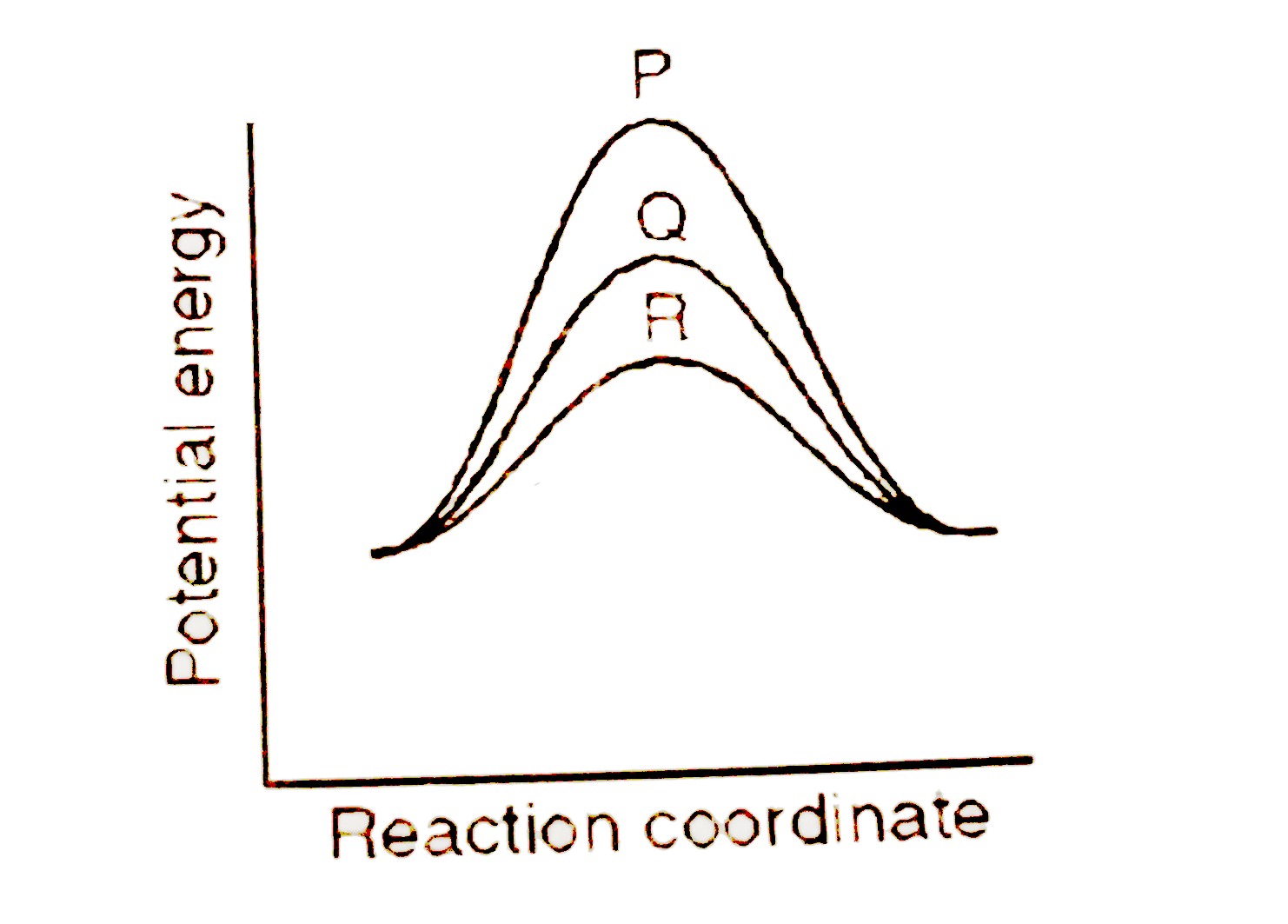Complete Solutions to Revision Question of chapter RATES OF REACTIONS AND CHEMICAL KINETICS of Class 11 book with complete answers and questions
| Class 11 | CHEMISTRY |
| Chapter | RATES OF REACTIONS AND CHEMICAL KINETICS |
| DINESH OBJECTIVE CHEMISTRY | Revision Question |
| Number Of Questions | 100 |
| Academic Year | 2023-24 |
The rate of reaction `A + B rarr` Product is given by the equation `r = k[A][B]`. If `B` is taken in large excess, the order of the reaction would be
01:00View SolutionIf the initial concentration of reactant in certain reaction is double, the half-life periof of the reaction doubles, the order of a reaction is
02:04View SolutionWhich of the following statement about the catalyst is/are true?
03:34View SolutionIn a first order reaction, `75%` of the reactants disappeared in `1.386 hr`. What is the rate constant ?
01:50View SolutionA substance `''A''` decomposes in solution following the first order kinetics. Flask `I` contains `1L` of `1 M` solution of `A` and falsk `II` contains `100 mL` of `0.6 M` solution. After `8 hr`, the concentration, of `A` in flask `I` becomes `0.25 M`. What will be the time for concentration of `A` in flask `II` to become `0.3 M` ?
04:02View SolutionHalf life period of 2 nd order reaction is
01:14View SolutionThe oxidation of oxalic acid by acidified `KMnO_(4)` is an example of autocatalyiss. It is due to which of the following ?
02:39View SolutionDiazonium salt decomposes as
`C_(6)H_(5)N_(2)^(+)Cl^(-) rarr C_(6)H_(5)Cl + N_(2)`. At `0^(@)C`, the evolution of `N_(2)` becomes two times faster when the initial concentration of the salt is doubled. Therefore, it is02:30View SolutionThe hydrolysis of ester in alkaline medium is a
01:28View SolutionThe conversion of `A rarr B` follows second-order kinetics. Doubling the concentration of `A` will increase the rate of formation of `B` by a factor
03:48View SolutionThe rate constant for a first order reaction whose half life is 480 sec, is :
00:54View SolutionSelect the law that corresponds to data shown for the following reaction `A+B rarr` Products
`{:(Exp,[A],[B],"Initial rate",),(1,0.012,0.035,0.1,),(2,0.024,0.070,0.8,),(3,0.024,0.035,0.1,),(4,0.012,0.070,0.8,):}`04:02View SolutionThe reaction `2H_(2)O_(2) rarr 2H_(2)O+O_(2)` is
`r=k[H_(2)O_(2)]`01:28View SolutionA chemical reaction has catalyst X. Hence X
01:42View SolutionThe raction `2FeCl_(3) + SnCl_(2) rarr 2FeCl_(2) + SnCl_(4)` is an example of
01:16View SolutionThe phenomenon of emission of visible light as a result of chemical change is known as
01:45View SolutionRate constant in case of first order reaction is
01:20View SolutionFor a zero order reaction `A rarr B, t_(1//2)` is (k is rate constant)
01:13View SolutionFor a chemical reaction `A rarr B`, it is found that the rate of reaction doubles when the concentration of `A` is increased `4` times. What is the order of reaction ? Suggest the rate law also.
02:00View SolutionFor the first order reaction with rate contant `k`, which expression gives the half life period ? (Initail conc. = a)
01:19View SolutionThe rate constant is given by the equation `k = P.Ze^(-E//RT)`. Which factor should register a decrease for the reaction to proceed more rapidly ?
02:32View SolutionFor a reaction of type `A +B rarr` products it is observed that doubling concentration of A causes the reaction rate to be four times as great, but doubling amount of B does not affect the rate,The rate equation is
01:48View SolutionFor the reaction `A rarr B`, the rate law expression is rate `=k[A]`. Which of the following statements is incorrect ?
02:56View SolutionThe reaction
`N_(2)O_(5)` (in `C Cl_(4)` solution) `rarr 2NO_(2)` (solution) `+(1)/(2) O_(2)(g)` is of first order in `N_(2)O_(5)` with rate constant `6.2 xx 10^(-1) s^(-1)`. What is the value of rate of reaction when `[N_(2)O_(5)] = 1.25` mole ?01:36View Solution`75%` of a first-order reaction was completed in `32` minutes, when was `50%` of the reaction completed ?
00:46View SolutionTh Arrhenius equation expressing the effect of temperature on the rate constant of the reaction is
01:56View SolutionThe first order rate constant for the decomposition of `N_(2)O_(5)` is `6.2 xx 10^(-4) sec^(-1)`. The `t_(1//2)` of decomposition is
01:16View SolutionA reaction is 50 % complete in 2 hours and 75 % complete in 4 hours the order of reaction is
02:30View SolutionVelocity constant of a reactin at 290 K was found to be `3.2 xx 10^(-3)`. At 300 K it will be
02:34View SolutionIf reaction between A and B to give C shows first order kinetics in A and second order in B, the rate equation can be written as
01:08View SolutionFor a first order reaction, the half-life period is independent of
01:49View SolutionA catalyst increases rate of reaction by
01:44View SolutionFor a first order reaction, obatin a positive slope, we need to plot [A] in the concentration of reactant AB
03:47View SolutionGiven `t_(1//2) =3` hr. Then how many gram of a substance will remain after 18th hr from 300 gram of a substance
01:37View SolutionFor the reaction `A + B rarr C + D`, doubling the concentration of both the reactants increases the reaction rate by `8` times and doubling the initial concentration of only `B` ismply doubles the reaction rate. What is the rate law for the reaction ?
04:20View SolutionThe effect of temperature on reaction rate is given by
02:06View SolutionThe decomposition of a substance follows first order kinetics. If its conc. Is reduced to 1/8th of its initial value, in 24 minutes, the rate constant of decomposition process is
02:02View SolutionFor a first order reaction, the plot of log `k` against 1/T is a straight line. The slope of the line is equal to
02:11View Solution`"1 dm"^(3)` of `2 M CH_(3)COOH` is mixed with `"1 dm"^(3)` of 3 M ethanol to form ester. The decrease in the initial rate if each solution is diluted with an equal volume of water would be
02:55View Solution`ROOR'+H_(2)Ooverset("HCl")(rarr)RCOOH+R'OH` ltbtgt What type of reaction is this ?
01:56View Solution75 % of first order reaction is complete in 30 minutes. What is the time required for 93.75 % of the reaction (in minutes) ?
03:32View SolutionFor a given reaction, `t_(1//2) = 1 //ka`. The order of this reaction is
00:53View SolutionThe conversion of `A rarr B` follows second-order kinetics. Doubling the concentration of `A` will increase the rate of formation of `B` by a factor
03:48View SolutionThe activation energy of a reaction can be determined by
01:15View SolutionFor the reaction `2N_(2)O_(5) rarr 4NO_(2)+O_(2)` rate of reaction and rate constant are `1.02 xx 10^(-4)` and `3.4 xx 10^(-5) sec^(-1)` respectively. The concentration of `N_(2)O_(5)` at that time will be
01:38View SolutionThe time taken for 90% of a first order reaction to be completed is approximately
01:25View SolutionThe half-life period for the first order reaction is 693 seconds. The rate constant of this reaction would be
01:01View SolutionThe reaction `2N_(2)O_(5)hArr 2N_(2)O_(4)+O_(2)` is
01:36View SolutionCollision theory is application to
01:47View SolutionA chemical reaction was carried out at 300 K and 280 K. The rate constants were found to be `k_(1) and k_(2)` respectively. Then
02:32View SolutionHalf-life of a reaction is found to be inversely proportional to the cube of its initial concentration. The order of reaction is
01:33View SolutionThe order of reaction is decided by
01:47View SolutionA graph plotted between `log k` versus `1//T` for calculating activation energy is shown by
02:45View SolutionUnits of rate constant of first and zero order reactions in terms of molarity `M` are respectively:
01:40View SolutionWhich of the following is correct for a first order reaction ?
01:26View Solution`2A rarr B + C`. It would be a zero-order reaction when
01:48View SolutionIf `3A rarr 2B`, then the rate of reaction of `+ (dB)/(d t)` is equal to
01:14View SolutionWhen we increase the temperature, the rate of reaction increases because of
01:52View SolutionIn Arrhenius plot, intercept is equal to
01:25View SolutionThe rate of reaction is doubled for `10^(@)C` rise in temperature. The increase in the reaction rate as a result of temperature rise from `10^(@)C` to `100^(@)C` is
01:56View SolutionFor the reaction:
`H_(2) + Cl_(2) underset("Sunlight")rarr2HCl`
taking place on water. Find the order of reaction.00:47View SolutionThe temperature dependence of rate constant (k) of a chemical reaction is written in terms of Arrhenius equation, `k=Ae^(-E_(a)//RT))` Activation energy `(E_(a))` of the reaction can be calculate by plotting
03:36View SolutionIf the rate of the reaction is equal to the rate constant, the order of the reaction is
01:55View SolutionThe rate law for a reaction between the substances A and B is given by rate `= K[A]^(n) [B]^(m)`. On doubling the concentration of A and having the concentration of B, the ratio of the new rate to the earlier rate of the reactio will be:
02:23View SolutionTemperature coefficient of a reaction is 2. When temperature is increased from `30^(@)C` to `100^(@)C`, rate of the reaction increases by
01:35View SolutionFor the reaction `A + Brarr C +D`, if concentratiton of A is doubled without altering the concentration of B, the rate gets doubling, If the concentration of B is increased by nine times without altering the concentration of A, the rate gas tripled. The order of reaction is
03:51View SolutionThe potential energy diagram for a reaction `R rarr P` is given by

`Delta H^(@)` of the reaction compounds to the energy02:06View SolutionRate of 1st order depends upon
01:18View SolutionFor a first order reaction, units of rate constant are
01:30View SolutionThe unit of second order reaction rate constant is
01:46View SolutionThe half-life of a reaction is halved as the initial concentration of the reaction is doubled. The order of the reaction is
01:57View SolutionThe rate constant of a reaction at temperature 200 K is 10 times less than the rate constant at 400 K. What is the activation energy `(E_(a))` of the reaction ? (R = gas constant)
02:43View SolutionWhich one of the following equation is correct forr the reaction : `N_(2)(g)+3H_(2)(g)rarr2NH_(3)(g)` ?
02:45View SolutionFor a chemical reaction ……. Can never be a fraction
02:21View Solution`75%` of a first-order reaction was completed in `32` minutes, when was `50%` of the reaction completed ?
00:46View SolutionThe time taken for the completion of 3/4 of a first order reaction is
02:21View SolutionThe rate constant `k`, for the reaction `N_(2)O_(5)(g) rarr 2NO_(2) (g) + (1)/(2) O_(2)(g)` is `2.3 xx 10^(-2) s^(-1)`. Which equation given below describes the change of `[N_(2)O_(5)]` with time ? `[N_(2)O_(5)]_(0)` and `[N_(2)O_(5)]_(t)` correspond to concentration of `N_(2)O_(5)` initially and at time, `t` ?
02:25View SolutionThe rate of first-order reaction is `1.5 xx 10^(-2) M "min"^(-1)` at `0.5 M` concentration of reactant. The half-life of reaction is
03:12View SolutionThe velocity constant of a reaction at 290 K was found to be `3.2 xx 10^(-3) s^(-1)`. When the temperature is raised to 310 K, it will be about
02:30View SolutionThe reaction, `2SO_(2(g)) + O_(2(g))hArr2SO_(3(g))` is carried out in a 1 `dm^(3)` and 2 `dm^(3)`vessel separately. The ratio of the reaction velocity will be
03:27View SolutionThe activation energy for most of the reactions is approximately `"50 kJ mol"^(-1)`. The value of temperature coefficient for such reactions is
01:51View SolutionWhich is correct about zero order reaction ?
02:18View SolutionThe half-life of `2` sample are `0.1` and `0.4` seconds. Their respctive concentration are `200` and `50` respectively. What is the order of the reaction
01:41View SolutionIn a first order reaction, the concentration of the reactant decreases form `0.8 M` to `0.4 M` in `15 min`. The time taken for the concentration to change form `0.1 M` to `0.025 M` is
03:12View SolutionThe rate equation for the reaction `2A+B rarr C` is found to be: `rate = k[A][B]`. The correct statement in relation of this reaction is that
05:00View SolutionFor the reaction : `2A +B rarr C +D`, measurement of the rate of the reaction at varying concentrations are given below
`{:("Trial No.","[A]","[B]","rate"("m mole L"^(-1)"s"^(-1))),(1,0.010,0.010,2.5),(2,0.010,0.020,5.0),(3,0.030,0.020,45.0):}`
The rate law is therefore03:45View SolutionA first-order reaction was started with a decimolar solution of the reactant, `8` minutes and `20 `seconds later its concentration was found to `M//100`. So the rate constant of the reaction is
01:50View SolutionA substance undergoes first order decomposition. The decomposition follows two parallel first order reaction as:
 and `KP_(1)=1.26xx10^(-4)sec^(-1)`
and `KP_(1)=1.26xx10^(-4)sec^(-1)`
`K_(2)=3.80xx10^(-5)sec^(-1)`
The percentage distribution of B and C are:03:14View SolutionFor reaction `aA rarr xP`, when `[A] = 2.2 mM`, the rate was found to be `2.4mM s^(-1)`. On reducing concentration of `A` to half, the rate changes to `0.6 mM s^(-1)`. The order of reaction with respect to `A` is
04:20View SolutionAn endothermic reaction with high activation energy for the forward reaction is given by the diagram
02:07View SolutionThe energy of activations for forward and backward change for an endothermic reaction, `X rarr Y` are `E_(f)` and `E_(b)` respectively. Which of the following is correct ?
01:08View SolutionA reaction involiving two different reactants can never be:
01:37View SolutionAccording to law of mass action rate of a chemical reaction is proportional to
01:21View SolutionFor a first-order reaction `A rarr B` the reaction rate at reactant concentration of `0.10 M` is found to be `2.0 xx 10^(-5) "mol" L^(-1) s^(-1)`. The half-life period of the reaction is
01:14View SolutionThe experimental rate law for a reaction
`2A + 2B rarr` Product, is
`V prop C_(A) C_(B)^(1//2)`. If the concentration of both A and B are doubled the rate of reaction increases by a factor of01:20View SolutionWhat is the time required for a first order reaction to be 99 % complete, compared to the time taken for the reaction to be 90 % complete ?
02:38View SolutionDuring the decomposition of `H_(2)O_(2)` to give oxygen, `48 g O_(2)` is formed per minute at a certain point of time. The rate of formation of water at this point is
02:12View SolutionIf a homogeneous catalytic reaction can take place through three alternative paths as depicted below, the catalytic efficiency of P,Q R representing the relative case would be
 01:15View Solution
01:15View SolutionObserve the following reaction
`2A +B rarr C`
The rate of formation of C is `2.2 xx 10^(-3) "mol L"^(-1) "min"^(-1)`. What is the value of `-(d[A])/(dt)("in mol L"^(-1) "min"^(-1))` ?01:52View SolutionHalf life of a radioactive substance is 6 minute. If its initial amount is 32g, then amount present after 18 minute is
01:48View Solution
Revision Question questions and complete solutions for chapter RATES OF REACTIONS AND CHEMICAL KINETICS of S DINESH & CO CHEMISTRY (HINGLISH) of Class 11
